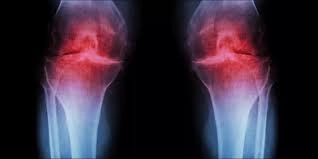
Conservative or Surgical Treatment for Joint Osteoarthritis Dr. Ahmed Mohamed
Published on: 2025-06-30 | Written by: Dr. Ahmed Mohamed Khamis, Consultant Orthopedic and Fracture Surgeon
Dr. Ahmed Mohamed Khamees, Consultant of Orthopedic Surgery and Fractures at Alexandria University, Member of the American Academy of Orthopaedic Surgeons, and Specialist in Joint Surgeries, Arthroscopy, and Bone Deformity Correction, explains the difference between conservative and surgical treatments for joint osteoarthritis, and when a patient should move from non-invasive approaches to surgical intervention.
What Is Joint Osteoarthritis?
Joint osteoarthritis, also known as degenerative joint disease, is the gradual erosion of cartilage covering the joint surfaces, causing bones to rub against each other. This leads to pain, stiffness, and difficulty in movement.
Dr. Ahmed Mohamed Khamees notes that the knee, hip, and shoulder are among the most commonly affected joints, especially with aging, obesity, or repeated joint injuries.
What Is Conservative Treatment?
Conservative treatment includes all non-surgical methods used to relieve symptoms and improve quality of life, such as:
-
Pain relievers and anti-inflammatory medications
-
Physical therapy and strengthening surrounding muscles
-
Intra-articular injections (like corticosteroids or PRP)
-
Weight loss and lifestyle modifications
-
Assistive devices like braces or walking aids
According to Dr. Ahmed Mohamed Khamees, conservative treatment is highly effective in early to moderate cases and can often delay the need for surgery.
When Is Surgery Recommended?
Dr. Ahmed Mohamed Khamees explains that surgery becomes necessary in the following situations:
-
Conservative treatments fail to relieve pain
-
Daily activities are significantly restricted
-
Imaging shows complete joint damage
-
Visible joint deformity appears
-
Chronic pain interferes with sleep and mobility
What Surgical Options Are Available?
Dr. Ahmed Mohamed Khamees outlines the most common surgical options:
-
Arthroscopy: For mild to moderate cases to clean and smooth the joint
-
Osteotomy: Realigning bones to reduce joint stress
-
Partial or Total Joint Replacement: In advanced stages to restore function and eliminate pain
Conclusion
Choosing between conservative and surgical treatment requires a comprehensive evaluation of the joint condition and the patient’s overall lifestyle. Dr. Ahmed Mohamed Khamees emphasizes that regular follow-up with a specialist helps determine the right time for surgery and prevents long-term complications. Every case is unique, and the treatment plan must be tailored individually.

